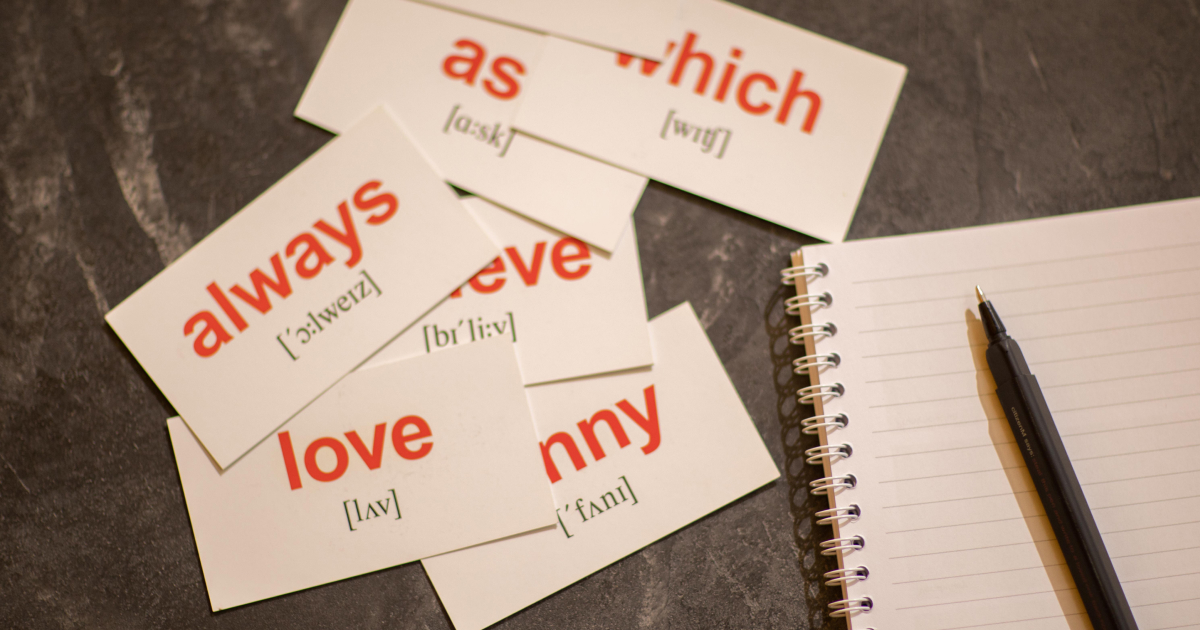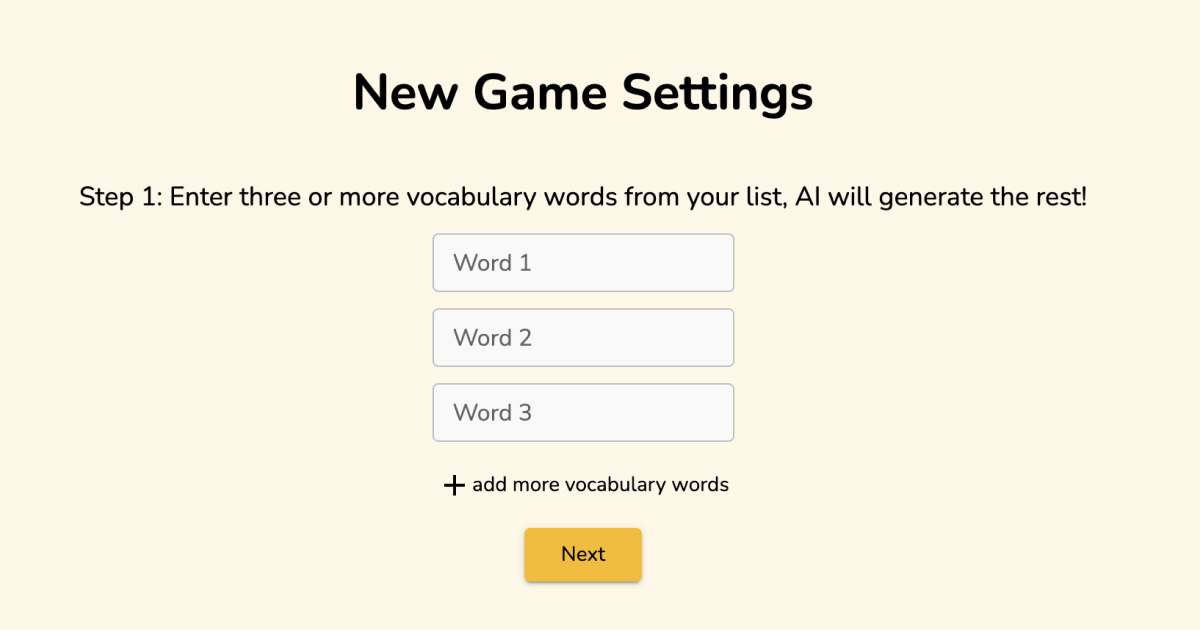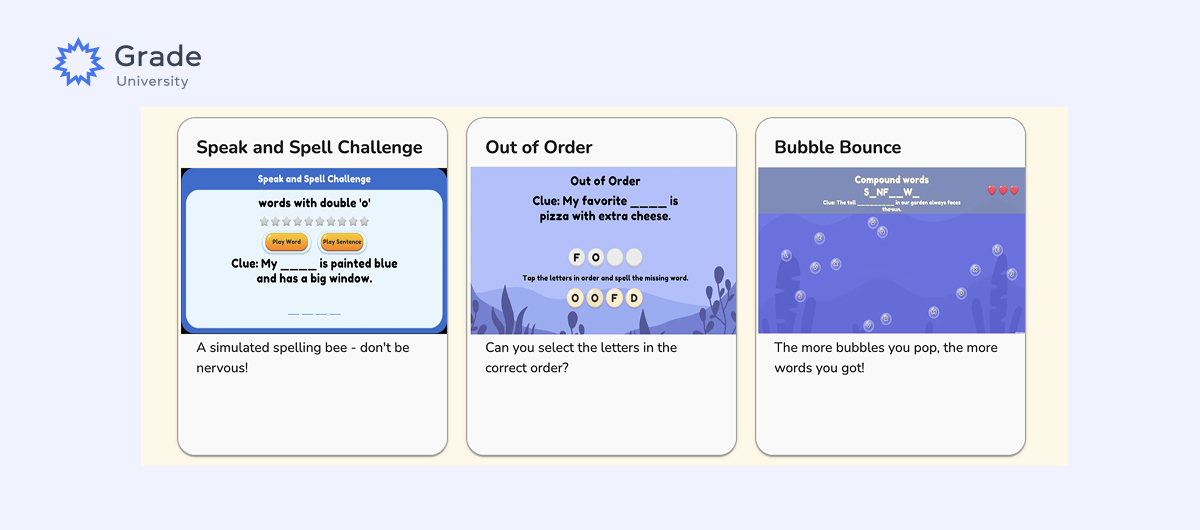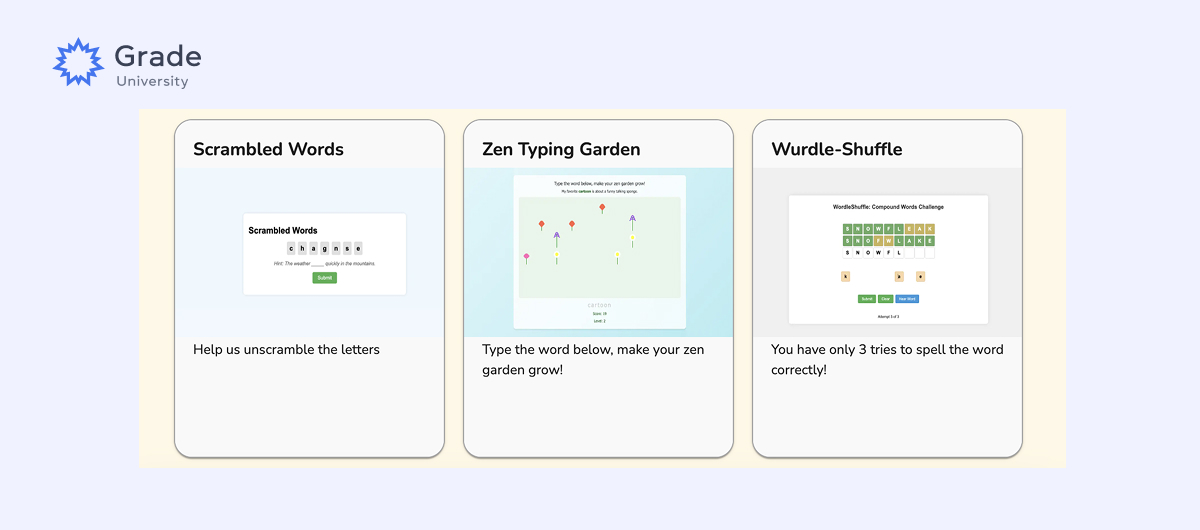Synonyms teaching ideas
- Vocabulary
- Activities

08.04.2025
These days teaching is changing and modifying fast.
The Internet is full of various tools and techniques to make teaching easier for a teacher and more memorable for students. So, I believe it can be overwhelming to decide on resources to use for your lessons.
Why do we need these virtual helpers? There are lots of reasons, frankly speaking.
Firstly, you must think about making your life easier when it comes to planning the lessons and preparing the materials.
Secondly, we need to make lessons memorable and engaging, and it’s not only about younger learners.
To add more, we can simply run out of ideas because we are only humans (with a pinch of superpower though).
And, of course, we need to have a plan B for fast finishers, difficulties in understanding the meaning, and the need for more memorisation.
Finally, making lessons more interactive will only bring benefits both to your students and you.
Let’s see what can be helpful assistance for an English teacher when the new vocabulary is being taught.

Spark your English lessons with flashcards
Join our courseWe’ve already discussed effective tools and strategies in our blog (if you haven’t seen it already — do this). The first familiarisation is presentation (poetically, isn’t it?).
You can present various lexical units using visuals.
There are 3 ways to make it work:
1) use flashcards (easy, handy, versatile, memorable)
2) use realia (even better than flashcards but available for face-to-face learning exclusively).
3) adapted or customised visuals (and this is a chance to impress your students and spark curiosity).
About the last one. With the development of AI technologies, you can easily find tools for making pictures.
All you need is to google them. But here is the first problem: most of them require a subscription. No worries, I got you!
With tools like Canva, Craiyon, Freepik, and Magic Studio, you’ll be able to significantly enhance your vocabulary lessons.
However, I must admit that they aren’t completely free and have some limitations.
There is no need to generate everything, since plenty of resources are available that can boost your vocabulary lesson.

How to create an effective ESL icebreaker?
Read nowThis is truly a treasury with a variety of materials that can satisfy any need of a busy teacher.
There are worksheets, projects, thought-provoking tasks, visuals, slides, based games, and activities, and many more.
It requires registration on a platform so you can access free resources.
It’ll become a good source for YL teachers, but some can be adapted for more mature learners as well.

Sometimes we all struggle because the textbooks aren’t really teacher-friendly.
Or we simply want to make a specifically themed lesson. Of course, we all can create a plan from scratch.
However, the Internet is full of platforms that provide ready-to-use lesson plans.
You don’t have to use every single activity or idea, but it can help you come up with the most suitable lesson content for your classroom by making a mix of different ideas from several resources. Like a jigsaw puzzle.
Great platform with plenty of ideas and activities for any kind of lesson. Some materials are free of charge or you can download PDF versions of tasks.
This site will give modern, colourful ideas for your vocabulary lessons. Or, at least, it can save you some time for preparation.
British Council is a reliable source for quick methodology help or activities that will definitely work.
Pronunciation tools for ESL teachers
There is another gem that will enhance the vocabulary teaching and learning experience. An easy and free platform that offers games and activities to memorise, check, and practice new lexis spelling.
Firstly, you paste your target language.

Next, it’ll ask you to choose the appreciate category and after that you’ll get to create games:


This platform will aid your students to become more confident in spelling because sometimes it’s something that terrifies students.
If you have curious and fast students, you can challenge them with rebus solving.
Even though it can be really challenging, it will make your students think and try to find the solution.
You can use target language to get them busy and engaged as it can be done individually (for fast finishers) and in groups (as part of TTT aka Test-Teach-Teach lesson frame) or as part of practice tasks.
Here are some resources that might help you: Rebus Club and Rebus Generator.
Best tools and apps for creating flashcards for your lessons
This platform is a great tool for practicing various vocabulary items of any age group.
It’s packed with visuals and audio supplement as well. There are plenty of topics so you can have a great choice there.
If you’re looking for a source of quizzes and games, visiting this site will be something you need.
It contains different interactive tasks for different levels and ages.
There are tasks targeting form, meaning, and spelling.
Basically, anything you need. It can be a great extra practice or part of your controlled exercises in the classroom.
Everyone knows WORDWALL: an easy and free instrument for making games and visuals for the lessons.
There are some updated templates that can come into use for vocabulary teaching.
“Spell the word” is especially good because students can listen to the word and use the letters to spell the words.
Also, you can add a clue with an image or rebus (because why not?).
Labelled diagram will be also great for training students’ attention and focus span. Also, it’ll be helpful and effective in memorising new items.
For example, you can make your own image with words and ask students to label synonyms/opposites.
Or you can challenge students by describing things from the image.
Use collages or word clouds. Wordwall also has the option of printing the materials.
You can make a worksheet or handout for your lesson. You can change a template and use the more suitable one.

Body parts ESL games & activities
Read nowWe as teachers don’t only teach and assess the words. We also must target other skills — autonomous learning and consistent vocabulary enrichment.
There is even more, because we can teach our students how to become successful learners.
For this, they need to be aware that they have support and opportunity to self-check.
So, there is an important stage in any learning process — the use of dictionaries and thesaurus.
Your student should understand that frequent use of these resources will only benefit their studying.
Let’s count down some online dictionaries and thesauruses that will help your students to feel more confident.
We, as teachers, always double-check everything using at least two sources. Teach the same to your students!
Of course, this one doesn’t need any introduction. Every English language learner knows about this dictionary.
It can be used for meaning checking or pronunciation.
Also, let students know that they can check spelling if they aren’t sure about it. Needless to say, it’s one of the most reliable sources that has ever existed.
To instruct your learners, you can show how you prepare for the lessons and how you analyse the content.
Or show the video about how it works:
Also, Cambridge Dictionary has an app “Cambridge Dictionary +” with lots of great features for students.
There is extra: the website also has various quizzes and other activities to check vocabulary knowledge.
Oxford Learners Dictionary is another great tool to assist not only educators but their students as well.
As it was mentioned previously, the meaning should be checked at least at two different dictionaries to make sure that nothing is missing.
Your students can do the same.
For instance, ask them to do research about new vocabulary: to look for meaning or check pronunciation. Then, you can check and compare your notes and see if your students noticed and find everything needed.
NB: don’t forget about the context — this is an essential part of any teaching process.
How to teach metaphors?
The Thesaurus is a resource with the words families and related concepts.
It’s a powerful tool that every language learner should know how to use to enhance their own learning experience.
Teachers also need this because often students ask for some extra words and they are not always popping up in your mind immediately.
Teaching vocabulary in chunks or groups may provide a positive effect on the way students memorise and retain the learned language units.
Moreover, it’s a great way to enlarge the number of words that they can use in different types of communication and interaction.
There is even more: it’s a great way to practice using monolingual dictionaries because the meanings should be checked too. All in one!
My recommendation — Thesaurus.com.
Cambridge and Oxford dictionaries also include thesauruses on their platforms.
Also, check out the Lexipedia. Simple to use. And it’s visually pleasant and concise.
It also color-codes the words by both parts of speech and relationships. As you hover over a word, a complete definition is displayed.
How to work with mixed-ability classes?
Vocabulary is fun to teach because it opens our minds to new worlds and concepts and broadens our horizons.
Enjoy this process and make it exciting and different for your students and yourself!
Yulia Popyk
Author
Teacher of General English & Young Learners, Exam Prep
Comments
Leave your comment